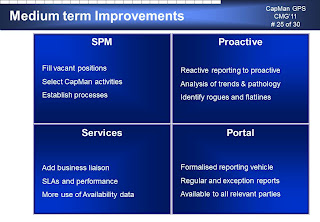The
mainframe, while retaining its traditional central role in IT organizations,
has evolved to also become the primary hub in large distributed networks making
managing its performance as critical as ever.
Many organizations mainframe experts are coming up to retirement age and the worry often is about who will replace them.The breadth of the mainframe can also mean there are specialists in individual areas such as DB2 and CICS.Companies are faced with a dilemma and in the current climate they have barely enough staff to cover everything as it is..
So it's no wonder that Companies have wished for the automation of mainframe systems performance analysis, software that can provide an independent view across all areas.
This, however, has not been so easy to find.....until now.
We know what a pivotal role the mainframe plays in many large Companies and we’ve launched our new ES/1 NEO, expert systems performance analysis for zOS.
It pulls together analysis and expertise across all major mainframe areas such as DB2, CICS, WAS, IMS and zVM. It automatically highlights potential problem areas. More to the point, it has a vast library of potential recommended solutions to any problem identified, meaning it can provide independent advice at any time for hard pressed teams, to resolve disputes or if skilled staff resources are in short supply.
To find out more about ES/1 NEO come along to my webinar on 28th February http://www.metron-athene.com/services/training/webinars/index.html
Charles Johnson
Principal Consultant
Many organizations mainframe experts are coming up to retirement age and the worry often is about who will replace them.The breadth of the mainframe can also mean there are specialists in individual areas such as DB2 and CICS.Companies are faced with a dilemma and in the current climate they have barely enough staff to cover everything as it is..
So it's no wonder that Companies have wished for the automation of mainframe systems performance analysis, software that can provide an independent view across all areas.
This, however, has not been so easy to find.....until now.
We know what a pivotal role the mainframe plays in many large Companies and we’ve launched our new ES/1 NEO, expert systems performance analysis for zOS.
It pulls together analysis and expertise across all major mainframe areas such as DB2, CICS, WAS, IMS and zVM. It automatically highlights potential problem areas. More to the point, it has a vast library of potential recommended solutions to any problem identified, meaning it can provide independent advice at any time for hard pressed teams, to resolve disputes or if skilled staff resources are in short supply.
To find out more about ES/1 NEO come along to my webinar on 28th February http://www.metron-athene.com/services/training/webinars/index.html
Charles Johnson
Principal Consultant










